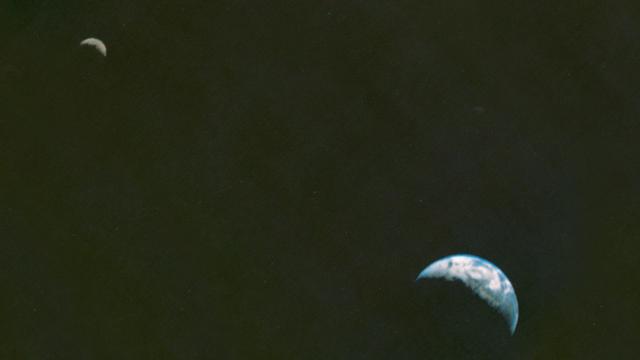Today marks the anniversary when NASA’s Voyager 1 captured both the Earth and its Moon in a single frame. For the first time, we perfectly captured the two celestial bodies we call home.
In the short time we’ve explored space, some of the most “holy shit” shots we’ve taken have been of our Earth and Moon. Voyager 1 was the first spacecraft to capture everything humanity had explored in one shot, but the interstellar probe wasn’t the first time we had captured images of Earth.
Lunar Orbiter 1: 1966
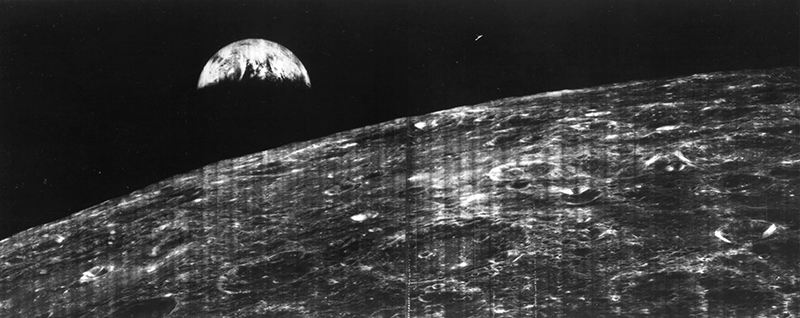
Image Via: JPL/NASA
Despite that this photo looks like it was taken about a century ago, it was actually photographed only half a century ago. We were receiving the first view of our big blue marble, from the perspective of the Moon. After being transmitted to Earth by the Lunar Orbiter 1, we were able to look at our home and be hit with sudden self-awareness of how puny we really are.
Apollo 8: 1968
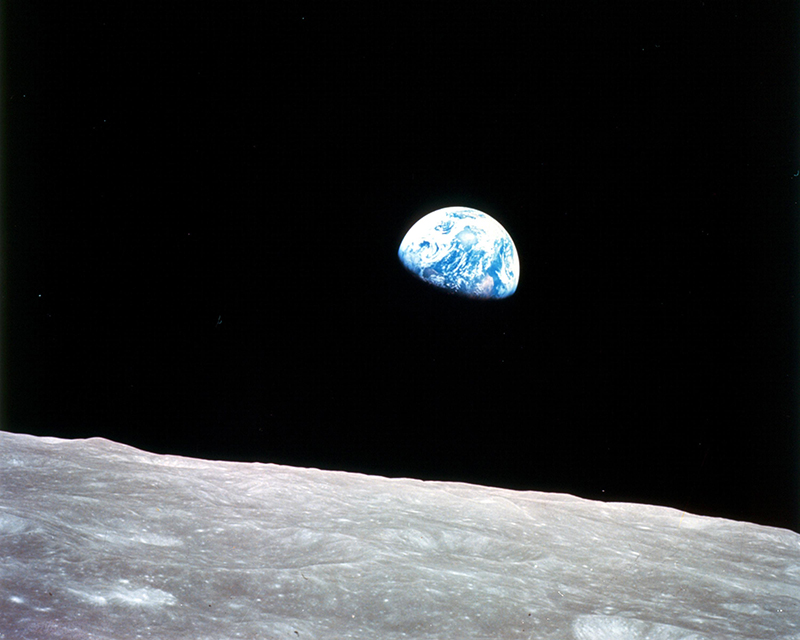
Image via JPL/NASA
About two years later, the Apollo 8 astronauts gave us “Earthrise.” These images of the colourful marble floating in blackness acted as a wake up call for environmental change — even catching the eye of wilderness photographer Galen Rowell who dubbed it “the most influential environmental photograph ever taken.”
Apollo 8 — entering lunar orbit on Christmas Eve, 1968 — was the first manned mission to leave Earth, reach the Moon and return home. That evening, astronauts held a live broadcast from their spacecraft unveiling the images — making us realise how fragile and lonely we really are in the cosmos.
As technology has improved, so have our images. We can now overlook our existential crisis and marvel at the glorious images robots have sent back from space.
Galileo: 1992
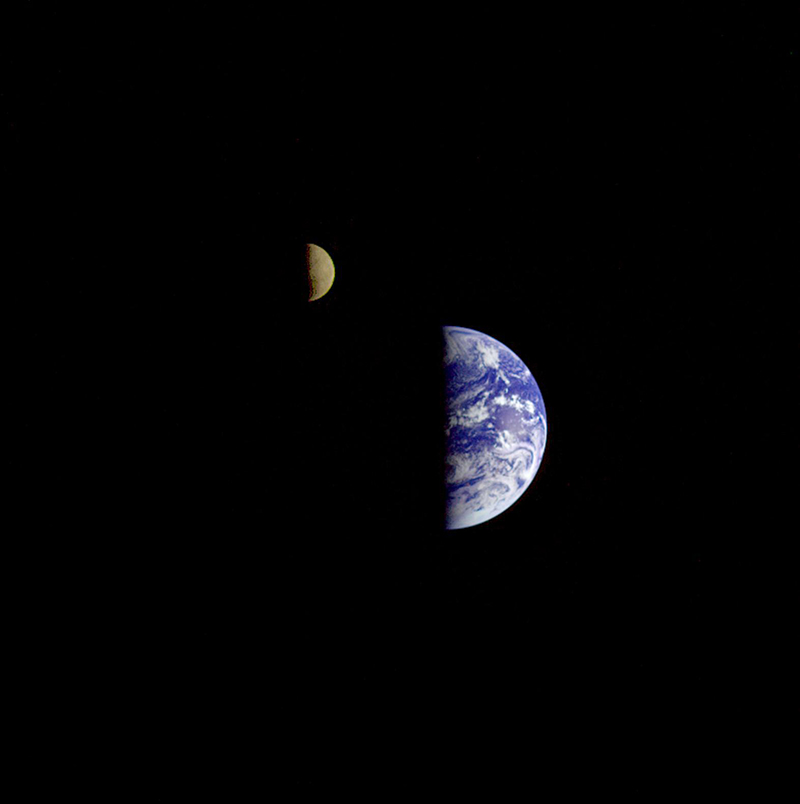
Image Via: JPL/NASA
Twinning exists in space too. NASA’s Galileo spacecraft sent back this breathtaking image of the Moon orbiting Earth from about 6.2 million kilometers away.
Mars Reconnaissance Orbiter: 2007
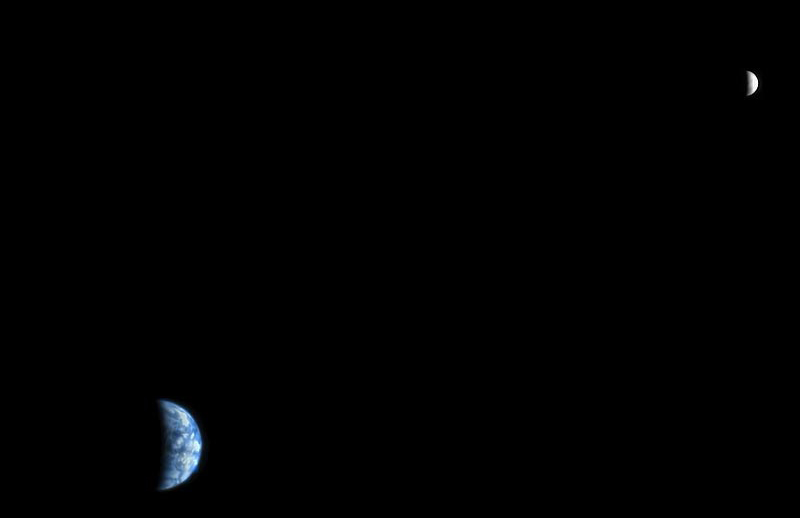
Image Via: JPL/NASA/U. Arizona
Then in 2007, NASA’s Mars Reconnaissance Orbiter shot another image of the Earth and the Moon, but from the perspective of another planet entirely — Mars.
During the time this image was taken, Earth was 142 million kilometers away from Mars. The photo even required significant processing due to the contrast between the dark Moon and the brightly-lit Earth.
Looking at the visible slice of Earth, you can see the west coast outline of South America.
Messenger: 2013
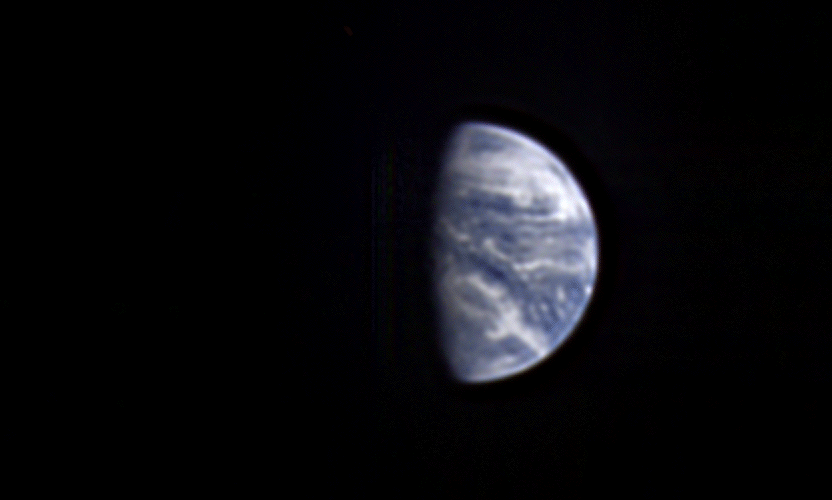
Image Via: JPL/NASA
NASA’s Messenger then sent us a picture of what looks like two lightbulbs in space. Kidding aside, it’s actually the Earth and the Moon taken in July 2013, from 98 million kilometers away.
The Earth and Moon are both overexposed in the main image because it was taken as part of a long-exposure search for satellites around Mercury.
Chang’e 5: 2014
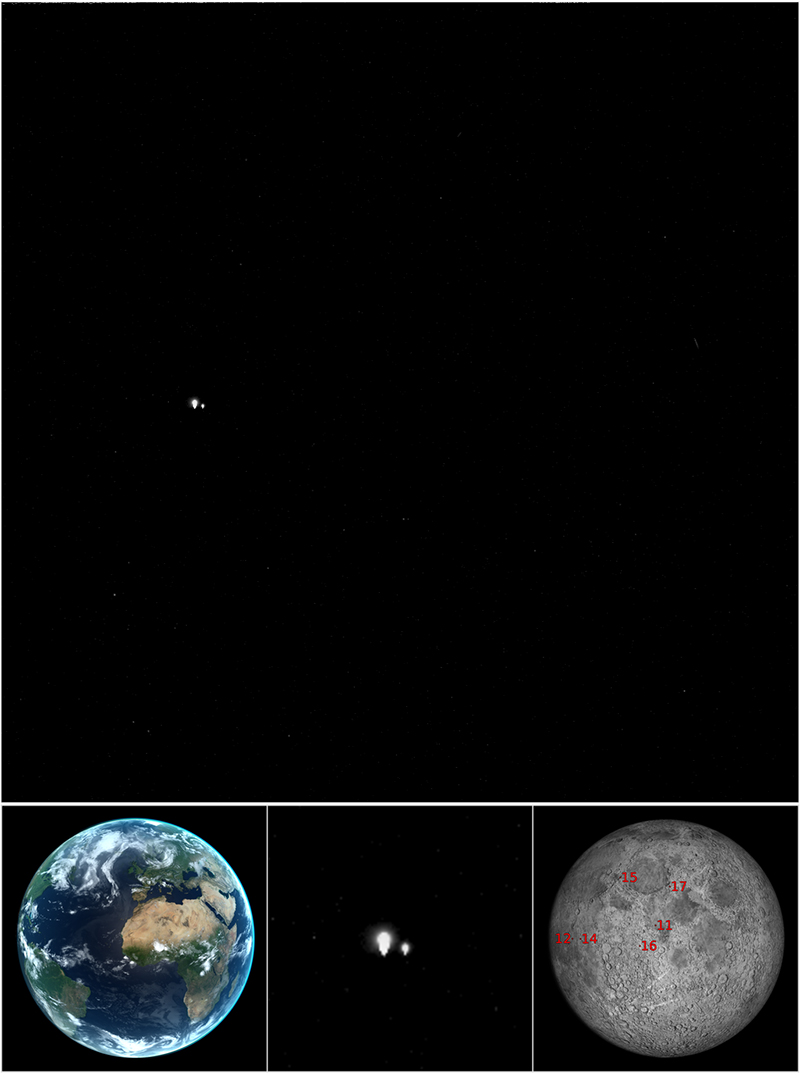
Image Via: JPL/NASA
Then, the Chinese Space Agency gave us this image of the Earth totally upstaging the Moon with its swirly marble-like beauty. The Chang’e 5 test vehicle service module took this image in November 2014.
Deep Impact: 2008
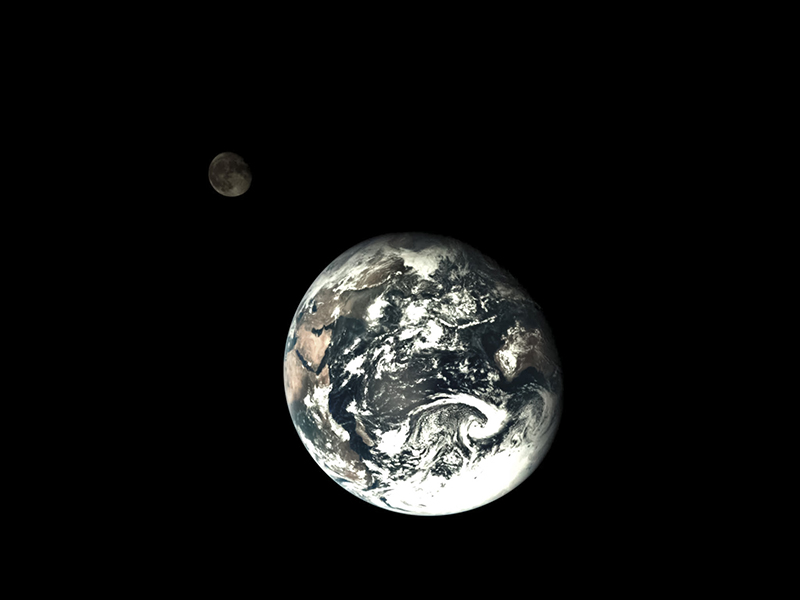
Image Via: NASA / JPL / UMD / animation by Gordan Ugarkovic
Four years later, NASA’s Deep Impact spied on the Earth and Moon from a distance of 50 million kilometres as part of the EPOXI mission in 2008. The blurry images of the Moon passing over the Earth may have resulted in the concentric ringing of the Moon.
DSCOVR: 2015
Video Via: NASA.gov Video on YouTube
Looking like a rock in contrast to our beautiful planet, NASA’s Deep Space Climate Observatory (DSCOVR) satellite gave us this non-blurry animation, showing us the the far side of the Moon, illuminated by the sun, crossing between the spacecraft and Earth. Taken one million miles away from Earth, DSCOVR’s camera and telescope showed us the most detailed images of the far side of the Moon since we began taking snapshots in 1959 with the Soviet Luna 3 spacecraft.
Now that Voyager 1 has made it into interstellar space, maybe we’ll get images of planets and moons that look just like ours (though we will probably be very dead : /). In the meantime, our spacecraft will continue to capture even more perspectives of what our Earth and Moon look like from within our galaxy.
Feature image via JPL/NASA
